





What kind of future do we want?
We are headed toward a 7°F rise in global temperature compared to preindustrial levels. We must act faster and more aggressively than ever before to slash emissions of long-lived climate pollutants, particularly carbon dioxide, and short-lived yet highly potent ones, especially methane.
Where we are headed
Without action, we may face 7ºF of warming with catastrophic consequences for health, coastal communities, food, ecosystems and more. Each year, 80% of people may endure heat waves. Several hundred millions risk losing homes from sea level rise. Around half of cropland could lose the ability to produce food. A billion acres of habitat could become unsuitable for most plants and animals—half the size of the contiguous U.S.
Well below 3.6ºF (2ºC) above preindustrial levels


















Interventions
Allowing emissions of greenhouse gases to continue unabated will result in a rapid rise in temperatures and commit our planet to warming for centuries.
What kind of future do we want?
We are headed toward a 7°F rise in global temperature compared to preindustrial levels. We must act faster and more aggressively than ever before to slash emissions of long-lived climate pollutants, particularly carbon dioxide, and short-lived yet highly potent ones, especially methane.
How can this be avoided?
Science tells us that limiting temperature rise to well below 3.6°F is essential in avoiding catastrophic impacts. Adjust the buttons on the following screen to see how different actions will improve the outlook for our future. Switch to the graph view by tapping the green tab.
Where we are headed
This is where we are today. The world has already warmed around 2ºF (1ºC) above preindustrial levels, bringing more severe fires, storms, coastal flooding and other harmful impacts. To avoid even greater damage, we must limit further warming as much as possible.
Methane Reduction
Global methane emissions are reduced by 50% below a business-as-usual baseline by deploying all available abatement measures. A major component of the achieved reductions is from measures to reduce methane emitted by oil and gas operations by 75% below current levels.
The Kigali amendment to the Montreal Protocol is implemented to phase down the use of HFCs as refrigerants.
Carbon Dioxide Reduction
Global methane emissions are reduced by 50% below a business-as-usual baseline by deploying all available abatement measures. A major component of the achieved reductions is from measures to reduce methane emitted by oil and gas operations by 75% below current levels.
The Kigali amendment to the Montreal Protocol is implemented to phase down the use of HFCs as refrigerants.
Sources
Solutions
EDF's Role
Where do the climate
pollutants come from?
Stopping climate change requires strong, quick action right at the source - within the sectors and
geographies that emit the most carbon dioxide and methane.
These countries have the largest impact on our planet's warming.
These economic sectors contribute the most carbon dioxide and methane emissions globally.
What do we need
to do?
The amount of carbon dioxide in our atmosphere has risen 30% and methane has risen 130% since the Industrial Revolution - leading to levels far beyond what society has ever known. To stabilize the climate and achieve the temperature goals of the Paris Climate Agreement, we will need to remove as much climate pollution from the atmosphere as we put in (net zero emissions) by mid-century. We also will need to help communities withstand the climate changes already underway. This requires the world to embrace three types of solutions.

Reduce
We need to immediately cut emissions of short and long-lived climate pollutants. Unless we succeed in this, temperatures will keep rising to catastrophic levels. Reducing emissions is the heart of EDF's climate efforts.

Remove
In order to achieve net zero emissions by mid-century, we will need to remove some climate pollution already emitted. This demands scientifically sound natural climate solutions, such as storing carbon in oceans and forests, and markets and investments to bring them to scale. It will also take the development of new pollution removal technologies.

Resilience
Some effects of climate change are already locked in. Proactively helping people and nature become more resilient will save lives and dramatically reduce damages. Communities and economies must be empowered to adapt and build resilient futures.
How is EDF helping
accomplish the
solutions?
Our top priority is securing dramatic and immediate cuts in the short - and long-lived pollutants driving climate change. Our approach is to advance strategies that turn the engines of the economy toward low-carbon prosperity - helping the world build a healthier and more equitable future.
We focus on approaches that are practical and cost-effective, and where our strengths in science, economics and policy bring the most value and create the biggest impact. Below, explore EDF's role within a suite of climate solutions.
-
Methane
-
Forests
-
Transport
-
U.S.
-
China
-
India
-
E.U.
Reduce
Tap the icons above to learn how we are catalyzing tech innovations, transforming markets and influencing climate policy to reduce methane and carbon dioxide emissions.
Slash methane from the oil and gas industry by 75%
The fastest, most cost-effective way to slow warming is to cut methane pollution from oil and gas. Our goal of a 75% reduction by 2030 will achieve the same climate impact over the next 20 years as closing a third of the world’s coal plants. As we advance policies to cut methane, our affiliate, MethaneSAT LLC, is building and launching a satellite to identify major sources of global methane pollution. Using information gathered from the satellite, we plan to turn invisible methane pollution into a visible and costly reputational problem that companies and governments will have to address.
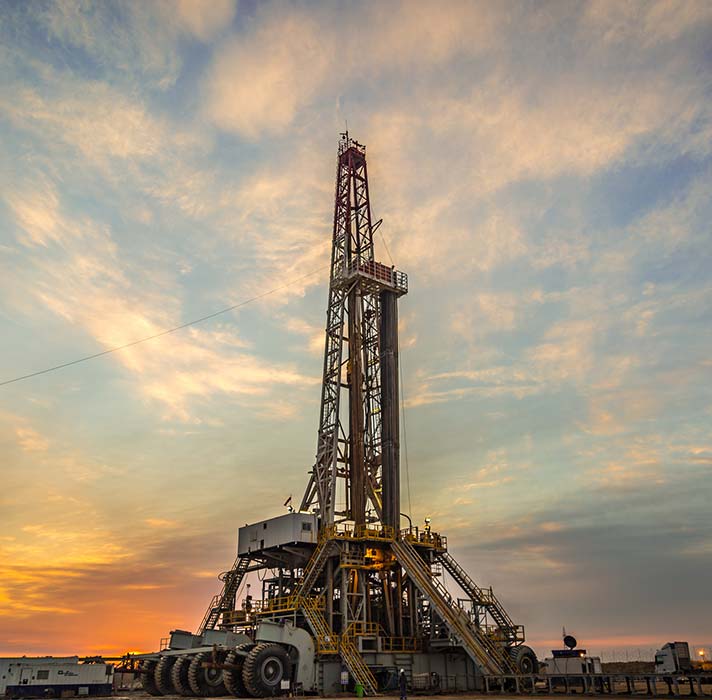
Protect tropical forests
Trees are natural storehouses for carbon, and when they burn, they release carbon dioxide and other pollutants into the air. To prevent this in the vast Amazon rainforest, EDF is helping our Brazilian partners stop criminals who illegally burn vast swaths of land to clear it for agriculture and other uses. We are also working with global corporations and other partners in Brazil to increase beef and soy production in a way that protects forests while boosting rural economies. Finally, we are leading efforts to channel investment into tropical forest protection through global carbon markets.

Achieve zero pollution delivery of goods
Pollution from transportation is growing faster than any other sector. This is driven by the trucks, ships and planes that deliver goods around the world — and to our doorsteps. We focus on near-term wins that result in long-term change. For example, we are leading efforts to secure carbon pollution limits in international aviation and shipping. And we are accelerating the transition to zero-emission, electric trucks by 2050 in the U.S., China and Europe.
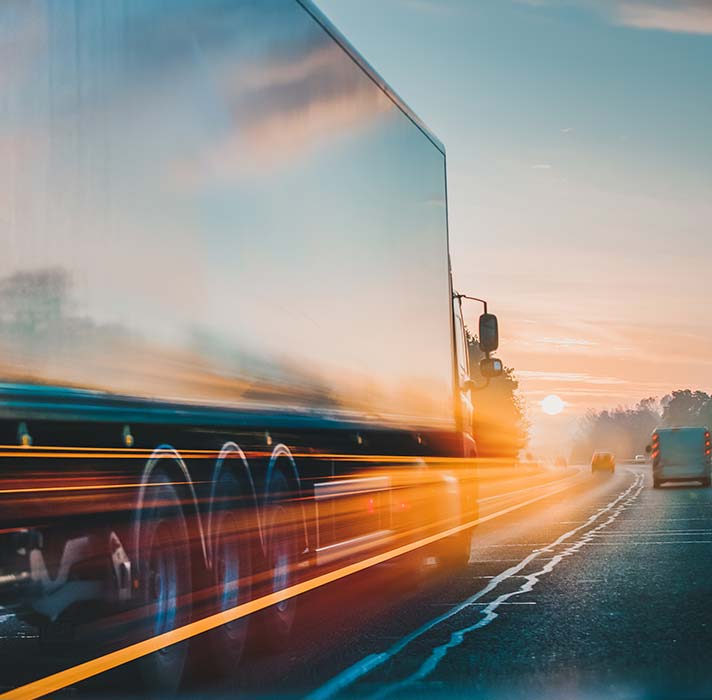
Move the United States to a 100% clean economy
At the state level, we are leading policy efforts to achieve immediate cuts in pollution. At the federal level, we are assembling a coalition of CEOs, energy firms, public health officials and grassroots activists to develop creative policy ideas, speed the transition to a 100% clean economy by 2050, and defend health and environmental safeguards. When the opportunity opens, we will be ready to secure comprehensive federal climate legislation.
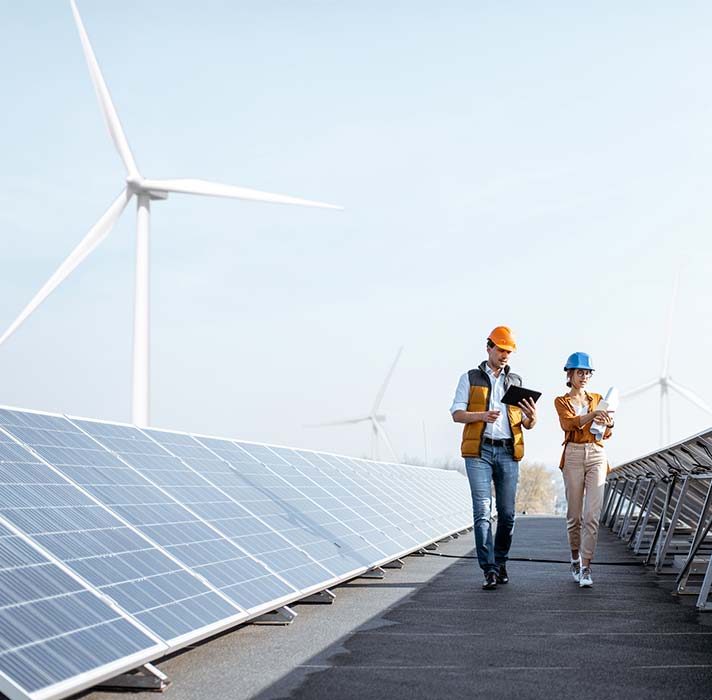
Cut China’s carbon emissions in half
EDF is building on nearly 30 years in China as a trusted government advisor in cutting air pollution to raise quality of life. To cap greenhouse gas emissions, we are helping to build China’s nationwide carbon market, which will gradually cover more than 7,000 companies from eight industries. We are also pushing the government to launch the national campaign of controlling methane emissions, another significant contributor to climate change.

Help India get on a low-carbon, high-growth path
Building on a decade of experience working with partners in India, we are working to cut climate and air pollution that kills millions of people in India’s cities. In rural states, we are promoting climate-smart farming to bolster food security as well as low-carbon technologies to protect human health. As individual states and millions of rural households become vested in a clean economy, they will become a powerful force for national change.

Map the way forward for Europe on climate
The proposed European Green Deal calls for Europe to become the first continent to achieve net zero carbon emissions by 2050. With 27 member states and 500 million people, the EU has been at the forefront of climate action and will be key to influencing the rest of the world’s ambition. EDF is well poised to use its expertise to support the European Commission in helping to achieve their goals.
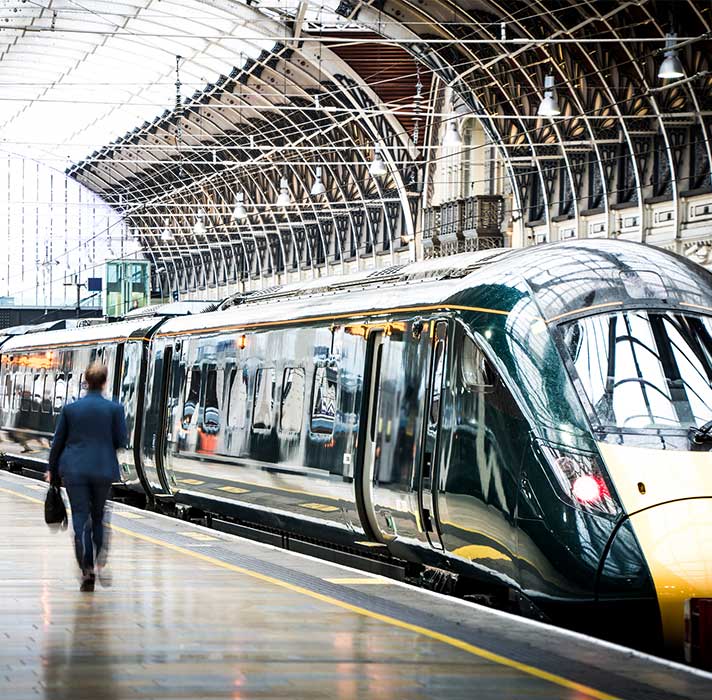
-
Science
-
Finance
Remove
As entrepreneurs, philanthropists, venture capitalists and other NGOs invest in natural solutions and new technologies to remove greenhouse gases from the atmosphere, EDF aims to ensure these solutions are safe and deliver real results for the climate.
Tap the icons above for examples
Get the science right
Many bold proposals exist for large-scale use of natural climate solutions, but there are limited rigorous, scientific standards for evaluating the scale and efficacy of such strategies. EDF aims to coordinate a neutral and transparent platform, developed with the world’s leading experts, to evaluate key assumptions and constraints, build consensus around standards, and increase investment and confidence in the most effective initiatives.

Realign financial systems
EDF is a global leader in developing innovative strategies to channel investment into climate protection. We focus on incorporating high-quality forest carbon credits into carbon markets; accelerating public-private financing models for forest protection; and partnering with governments, businesses and producers to reduce deforestation associated with global commodity supply chains. In the U.S. we are working to deploy similar tools, along with policy changes, to shift the farm financing and subsidy system to reflect the benefits of climate resilience, soil health and carbon sequestration on working farms, ranches and forests.

-
Farms
-
Oceans
-
Coasts
-
Drought
-
Energy
Resilience
EDF is working to promote climate-resilient practices that will support a safer and more secure food supply and protect coastal communities from stronger storms and flooding.
Tap the icons above for examples
Reward resilient farming methods
We work as a trusted partner with farmers, ranchers and the world’s largest food companies, such as Smithfield and Tyson, to reward U.S. landowners for practices that reduce climate pollution and increase the resilience of working lands. In rural India, we are helping farmers adopt practices that increase productivity and reduce emissions, creating a new income stream and new constituencies for low-carbon growth.

Support resilient oceans
EDF is a global leader in advancing the science and management of climate-resilient fishing, which is critical to food security: One in five people on the planet depend on fish as a primary source of protein. We are putting this approach to work in key places around the world, including the Philippines, Indonesia and South America’s Humboldt Current, one of the world’s most productive fishing grounds.

Protect coastal communities
The Mississippi River Delta is one of the largest deltas on Earth and loses a football field worth of land every 100 minutes. We are demonstrating how to use the Mississippi River’s natural processes to rebuild the coastline and protect from storms and flooding, as a model for coastal communities.
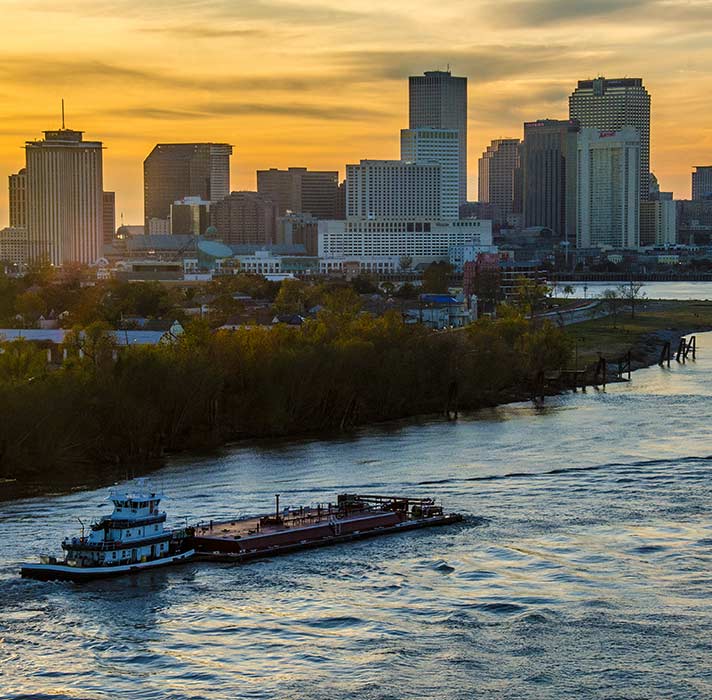
Prepare for drought
In the U.S. West, EDF is advancing technologies such as satellite data on crop irrigation needs, groundbreaking agreements, and market approaches like water trading to help communities meet their water needs during drought.

Advance resilient energy systems
We are working with community partners in Puerto Rico to build resilient microgrids — small electricity networks that can run independently of the main grid. Success in Puerto Rico can be a model for creating clean, reliable and affordable power that communities can rely on even after storms.

Global emissions estimated for 2015
Share of global CO2 and methane emissions
Sources
Where do the climate pollutants come from?
Stopping climate change requires strong, quick action right at the source - within the sectors and geographies that emit the most carbon dioxide and methane.

Global emissions estimated for 2015
These economic sectors contribute the most carbon dioxide and methane emissions globally.
These countries have the largest impact on our planet's warming.

Share of global CO2 and methane emissions
 Near-term impact of present-day emissions (2015)
Near-term impact of present-day emissions (2015)
 Near-term impact of present-day emissions (2015)
Near-term impact of present-day emissions (2015)
 Long-term impact of future emmisions (2015 to 2050)
Long-term impact of future emmisions (2015 to 2050)
Solutions
What do we need to do?
The amount of carbon dioxide in our atmosphere has risen 30% and methane has risen 130% since the Industrial Revolution - leading to levels far beyond what society has ever known. To stabilize the climate and achieve the temperature goals of the Paris Climate Agreement, we will need to remove as much climate pollution from the atmosphere as we put in (net zero emissions) by mid-century. We also will need to help communities withstand the climate changes already underway. This requires the world to embrace three types of solutions.

Reduce
We need to immediately cut emissions of short and long-lived climate pollutants. Unless we succeed in this, temperatures will keep rising to catastrophic levels. Reducing emissions is the heart of EDF's climate efforts.

Remove
In order to achieve net zero emissions by mid-century, we will need to remove some climate pollution already emitted. This demands scientifically sound natural climate solutions, such as storing carbon in oceans and forests, and markets and investments to bring them to scale. It will also take the development of new pollution removal technologies.

Resilience
Some effects of climate change are already locked in. Proactively helping people and nature become more resilient will save lives and will be more cost-effective than responding to disasters. Communities and economies must be empowered to adapt and build resilient futures.
EDF's Role
How is EDF helping accomplish the solutions?
Our top priority is securing dramatic and immediate cuts in the short - and long-lived pollutants driving climate change. Our approach is to advance strategies that turn the engines of the economy toward low-carbon prosperity - helping the world build a healthier and more equitable future.
We focus on approaches that are practical and cost-effective, and where our strengths in science, economics and policy bring the most value and create the biggest impact. Below, explore EDF's role within a suite of climate solutions.
-
Methane
-
Forests
-
Transport
-
U.S.
-
China
-
India
-
E.U.
Reduce
Tap the icons above to learn how we are catalyzing tech innovations, transforming markets and influencing climate policy to reduce methane and carbon dioxide emissions.
Slash methane from the oil and gas industry by 75%
The fastest, most cost-effective way to slow warming is to cut methane pollution from oil and gas. Our goal of a 75% reduction by 2030 will achieve the same climate impact over the next 20 years as closing a third of the world’s coal plants. As we advance policies to cut methane, our affiliate, MethaneSAT LLC, is building and launching a satellite to identify major sources of global methane pollution. Using information gathered from the satellite, we plan to turn invisible methane pollution into a visible and costly reputational problem that companies and governments will have to address.

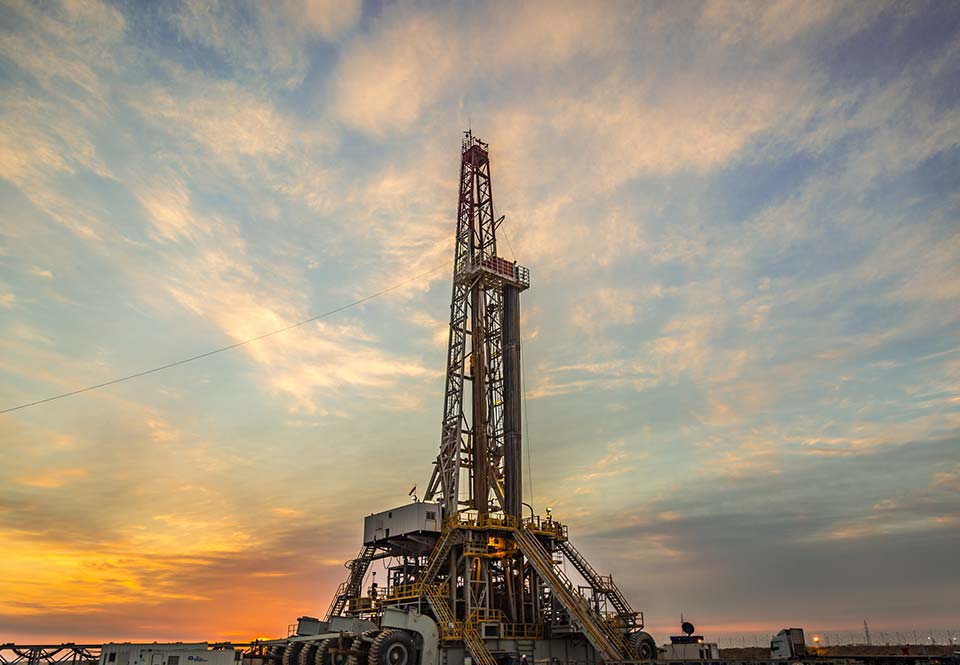
Protect tropical forests
Trees are natural storehouses for carbon, and when they burn, they release carbon dioxide and other pollutants into the air. To prevent this in the vast Amazon rainforest, EDF is helping our Brazilian partners stop criminals who illegally burn vast swaths of land to clear it for agriculture and other uses. We are also working with global corporations and other partners in Brazil to increase beef and soy production in a way that protects forests while boosting rural economies. Finally, we are leading efforts to channel investment into tropical forest protection through global carbon markets.


Achieve zero pollution delivery of goods
Pollution from transportation is growing faster than any other sector. This is driven by the trucks, ships and planes that deliver goods around the world — and to our doorsteps. We focus on near-term wins that result in long-term change. For example, we are leading efforts to secure carbon pollution limits in international aviation and shipping. And we are accelerating the transition to zero-emission, electric trucks by 2050 in the U.S., China and Europe.


Move the United States to a 100% clean economy
At the state level, we are leading policy efforts to achieve immediate cuts in pollution. At the federal level, we are assembling a coalition of CEOs, energy firms, public health officials and grassroots activists to develop creative policy ideas, speed the transition to a 100% clean economy by 2050, and defend health and environmental safeguards. When the opportunity opens, we will be ready to secure comprehensive federal climate legislation.

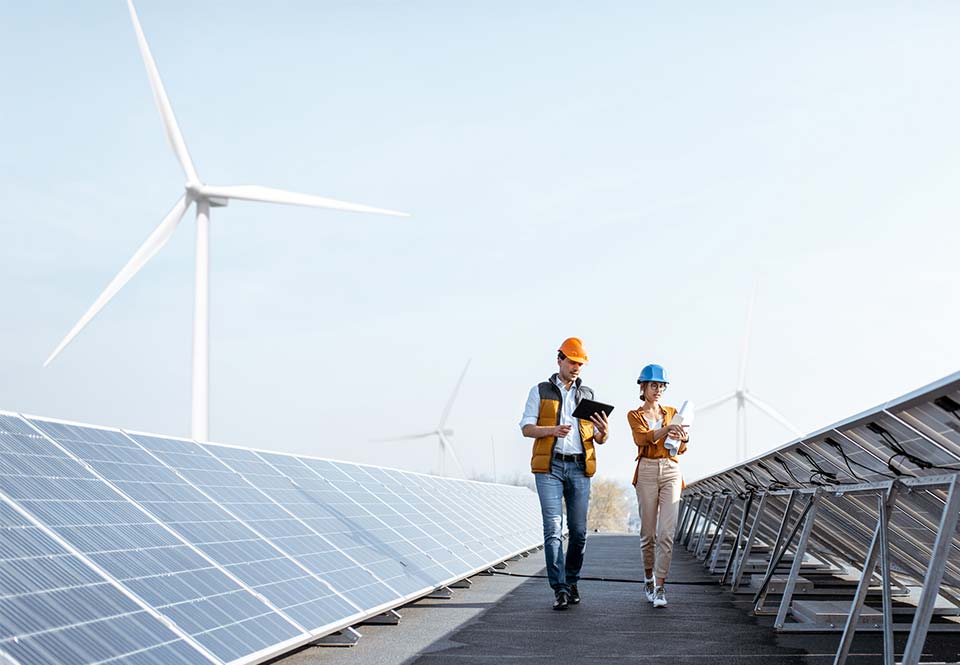
Cut China’s carbon emissions in half
EDF is building on nearly 30 years in China as a trusted government advisor in cutting air pollution to raise quality of life. To cap greenhouse gas emissions, we are helping to build China’s nationwide carbon market, which will gradually cover more than 7,000 companies from eight industries. We are also pushing the government to launch the national campaign of controlling methane emissions, another significant contributor to climate change.


Help India get on a low-carbon, high-growth path
Building on a decade of experience working with partners in India, we are working to cut climate and air pollution that kills millions of people in India’s cities. In rural states, we are promoting climate-smart farming to bolster food security as well as low-carbon technologies to protect human health. As individual states and millions of rural households become vested in a clean economy, they will become a powerful force for national change.

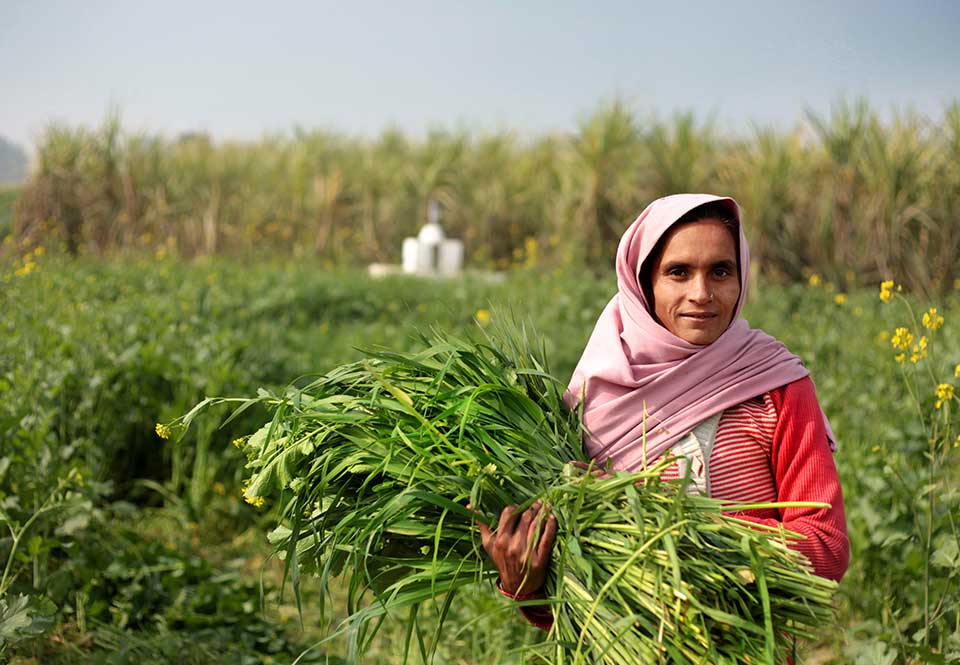
Map the way forward for Europe on climate
The proposed European Green Deal calls for Europe to become the first continent to achieve net zero carbon emissions by 2050. With 27 member states and 500 million people, the EU has been at the forefront of climate action and will be key to influencing the rest of the world’s ambition. EDF is well poised to use its expertise to support the European Commission in helping to achieve their goals.

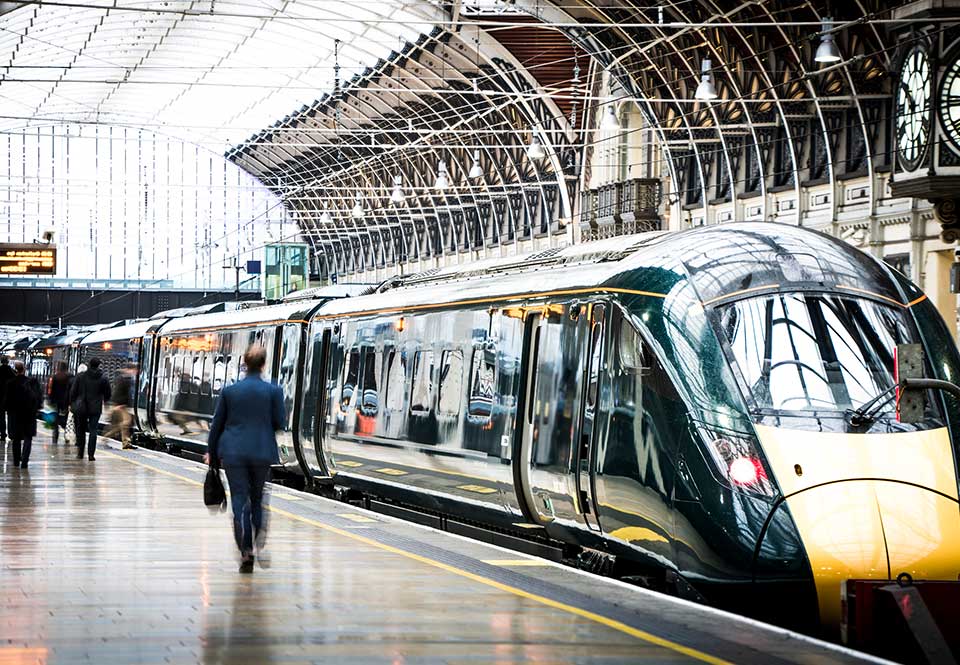
-
Science
-
Finance
Remove
As entrepreneurs, philanthropists, venture capitalists and other NGOs invest in natural solutions and new technologies to remove greenhouse gases from the atmosphere, EDF aims to ensure these solutions are safe and deliver real results for the climate.
Tap the icons above for examples
Get the science right
Many bold proposals exist for large-scale use of natural climate solutions, but there are limited rigorous, scientific standards for evaluating the scale and efficacy of such strategies. EDF aims to coordinate a neutral and transparent platform, developed with the world’s leading experts, to evaluate key assumptions and constraints, build consensus around standards, and increase investment and confidence in the most effective initiatives.


Realign financial systems
EDF is a global leader in developing innovative strategies to channel investment into climate protection. We focus on incorporating high-quality forest carbon credits into carbon markets; accelerating public-private financing models for forest protection; and partnering with governments, businesses and producers to reduce deforestation associated with global commodity supply chains. In the U.S. we are working to deploy similar tools, along with policy changes, to shift the farm financing and subsidy system to reflect the benefits of climate resilience, soil health and carbon sequestration on working farms, ranches and forests.


-
Farms
-
Oceans
-
Coasts
-
Drought
-
Energy
Resilience
EDF is working to promote climate-resilient practices that will support a safer and more secure food supply and protect coastal communities from stronger storms and flooding.
Tap the icons above for examples
Reward resilient farming methods
We work as a trusted partner with farmers, ranchers and the world’s largest food companies, such as Smithfield and Tyson, to reward U.S. landowners for practices that reduce climate pollution and increase the resilience of working lands. In rural India, we are helping farmers adopt practices that increase productivity and reduce emissions, creating a new income stream and new constituencies for low-carbon growth.


Support resilient oceans
EDF is a global leader in advancing the science and management of climate-resilient fishing, which is critical to food security: One in five people on the planet depend on fish as a primary source of protein. We are putting this approach to work in key places around the world, including the Philippines, Indonesia and South America’s Humboldt Current, one of the world’s most productive fishing grounds.


Protect coastal communities
The Mississippi River Delta is one of the largest deltas on Earth and loses a football field worth of land every 100 minutes. We are demonstrating how to use the Mississippi River’s natural processes to rebuild the coastline and protect from storms and flooding, as a model for coastal communities.

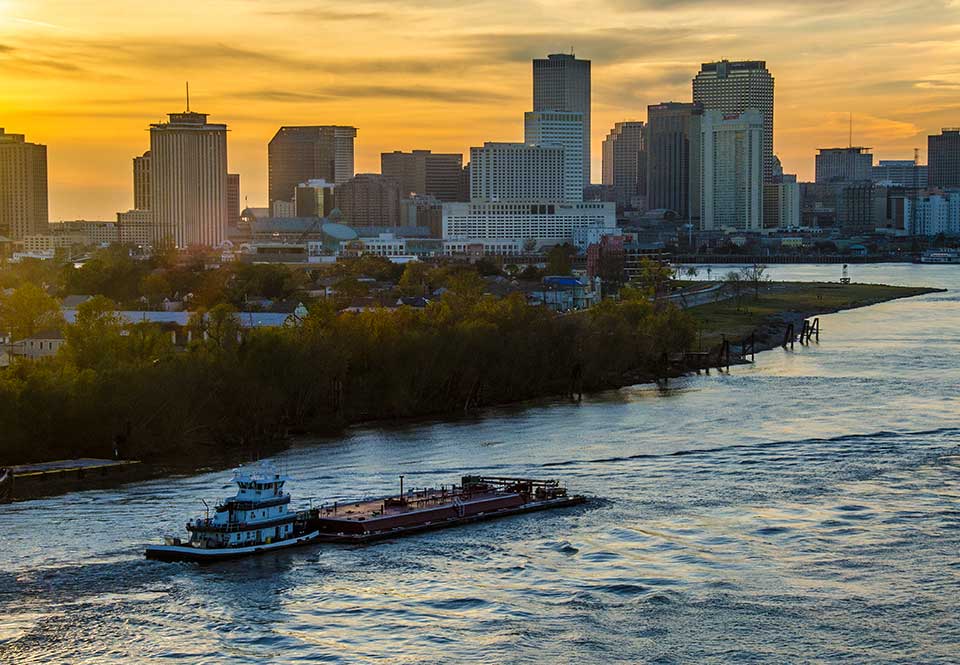
Prepare for drought
In the U.S. West, EDF is advancing technologies such as satellite data on crop irrigation needs, groundbreaking agreements, and market approaches like water trading to help communities meet their water needs during drought.


Advance resilient energy systems
We are working with community partners in Puerto Rico to build resilient microgrids — small electricity networks that can run independently of the main grid. Success in Puerto Rico can be a model for creating clean, reliable and affordable power that communities can rely on even after storms.


Invest in the
World's Future
As companies and NGOs team up to take action, as
scientists race to find solutions, it's time for the
forward-looking people like you to help us shape what
comes next. Through your support, you can help us
launch solutions at scale, make meaningful impact in the
near term and generate lasting positive outcomes.
Invest in the
World's Future
As companies and NGOs team up to take action, as
scientists race to find solutions, it's time for the
forward-looking people like you to help us shape what
comes next. Through your support, you can help us
launch solutions at scale, make meaningful impact in the
near term and generate lasting positive outcomes.
Climate change interactive:
Sources and assumptions
How are temperature changes calculated?
We use the widely accepted simple climate model MAGICC to simulate temperature responses to a variety of emissions scenarios. MAGICC model properties reflect the best available science on how emissions of greenhouse gases from human activities impact Earth’s climate over time. More details on the model can be found here.
What emissions are included in the climate model?
Future temperature changes calculated here include anticipated emissions from all human-emitted climate pollutants globally for a variety of scenarios. This includes both greenhouse gases (e.g. CO2, CH4, N2O, F-gases) and aerosols (e.g. black carbon, organic carbon, sulfur dioxide, nitrates). Not all of these pollutants warm the Earth – some cool the Earth – and those impacts are included. The production or destruction of additional climate pollutants in the atmosphere from chemistry interactions (such as methane oxidation producing ozone) are also included.
What do we assume for future “no action” emissions?
For our “no action” scenario, we use the JRC GECO 2018 reference scenario for projected emissions of carbon dioxide, methane, and nitrous oxide, and the IIASA RCP 8.5 scenario for projected emissions of all other climate pollutants.
What do we assume for future “action” emissions?
For mitigation scenarios, we look at interventions for major short-lived greenhouse gases and long-lived greenhouse gases separately. This is because it is important to understand (i) the role that each class of greenhouse gases plays in limiting warming both during our lifetimes and for generations to come, (ii) how it is crucial to reduce emissions of both, and (iii) how we cannot achieve climate stability without addressing both simultaneously.
Given the complexity of and uncertainty with aerosols, as well as their short lifetimes of about a week, we do not consider mitigation measures for aerosols and therefore their emissions continue as in the “no action” scenario. Note that this does not mean that they are not needed nor unimportant in addressing climate change. Black carbon in particular is a major contributor to present-day warming.
Methane and short-lived climate pollutants
For short-lived climate pollutants, we focus on measures to reduce emissions of methane, because this greenhouse gas dominates current and future warming from short-lived climate pollutants (past emissions of methane from human activities are responsible for at least one quarter of today’s warming and present-day emissions of methane will contribute to half of anticipated warming over the next two decades from present-day greenhouse gas emissions). Methane mitigation measures used in our scenarios represent achievable actions based on several abatement potential assessments and studies including EPA 2012, Hristov et al. 2015, IEA 2017, and Höglund-Isaksson et al. 2020. We select cost-effective measures for “moderate” actions, and all technologically available measures for “strong” actions. We also include implementation of the Kigali Amendment to the Montreal Protocol from both moderate and strong actions, which plans for a phase-down of HFCs. HFCs do not play a major role in today’s warming but if unabated may contribute considerably in the future.
Carbon dioxide and long-lived climate pollutants
For long-lived climate pollutants, we focus on measures to reduce emissions of carbon dioxide, because this greenhouse gas dominates current and future warming from long-lived climate pollutants (historical emissions are responsible for around half of today’s warming and 40% of current emissions will still be in the atmosphere in 100 years from now). For “moderate” actions, we assume implementation and extension of the Paris Agreement Nationally Determined Contributions (NDCs). For “strong” actions, we assume a rapid decarbonization of the energy and industry sectors and reduced deforestation that is consistent with a 3.6°F (2°C) temperature target and achieves net zero CO2 emissions globally by around 2075. Both the emissions pathways for NDCs and rapid decarbonization are taken from data provided by JRC GECO 2018. We also include addressing emissions of the long-lived climate pollutant nitrous oxide in our “strong” actions scenario, and the mitigation assumptions are also taken from JRC GECO 2018. Historical emissions of nitrous oxide account for around 5% of today’s warming, and nitrous oxide can last for over a century in the atmosphere and therefore commit our planet to warming in the long-term.
How do we know what impacts may occur for different levels of warming?
A lot of research over the past decade has gone into understanding the impacts that global warming will have on society and ecosystems in the future (such as IPCC 2014 and IPCC 2018). In order to provide a consistent assessment of a range of impacts for each incremental change in warming over the next century, we used an analysis prepared by a team of researchers from several universities and institutions in Europe (Arnell et al. 2015).
What about uncertainty?
To account for uncertainty in this interactive, we use conservative estimates for impacts and an average value for climate sensitivity. We also present projected temperature changes in Fahrenheit using one significant figure (and to have the conversions to Centigrade make sense,, we use corresponding half-degree increments in Celsius). However, while the climate may be a complicated system that we are always learning more about, what is absolutely clear is that the more greenhouse gases we emit into the atmosphere, the more warming we will experience today and in the future; as long as we are emitting greenhouse gases faster than we are removing them, there will be more warming. And what we have learned from the past few decades is that every bit of incremental warming has consequences. We have already had vast impacts to societies and ecosystems from nearly 2°F (1°C) of warming, and therefore it is not hard to image how impacts will worsen with more warming. Scientists are virtually certain that temperatures will continue to rise without interventions to prevent the build-up of greenhouse gases in the atmosphere. There is in fact a lot more uncertainty in our policy and business decisions going forward than in our understanding of the climate system and how the planet will react to further greenhouse gas emissions.

 Back
Back

















